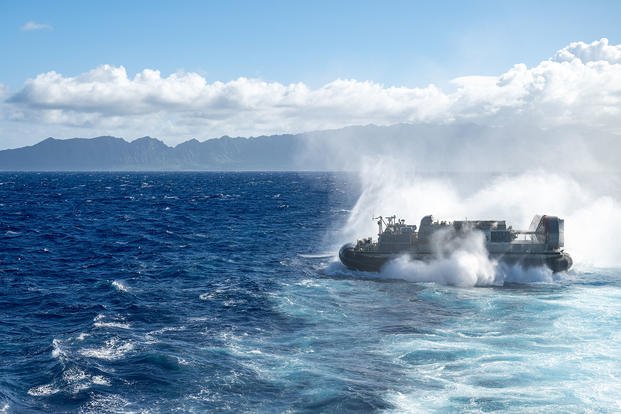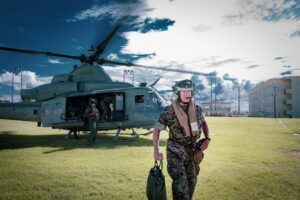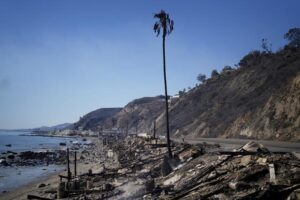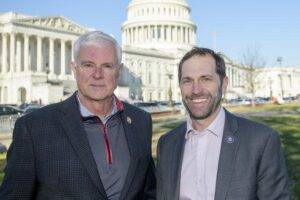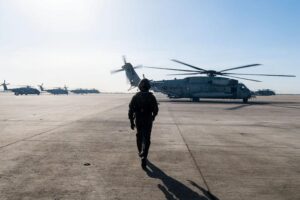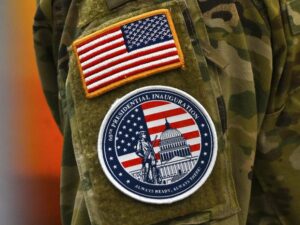Navy’s Pacific Training Intensifies Amid Environmental Concerns
The United States Navy is ramping up its training activities in the Pacific, specifically targeting nearshore regions like Kaneohe Bay and Marine Corps Training Area Bellows. This expansion includes novel exercises such as ocean mine warfare training, as highlighted in its latest environmental impact considerations.
Currently operating under a permit for the Hawaii-California Training and Testing Study Area, which expires in 2025, the Navy must present an Environmental Impact Statement (EIS) for renewal. The proposal features the creation of “special use” airspace in Southern California, an expanded underwater training range near San Clemente Island, and new ocean mine warfare training zones off Hawaii and Southern California.
A draft of the four-volume EIS is now available for public review, with feedback accepted until February 11. The Navy has arranged public sessions online and in-person across Hawaii and California.
The Navy’s press release clarifies, “While the overall boundaries of the Hawaii Study Area have not changed from the 2018 (Hawaii-California Training and Testing EIS and Overseas EIS), nearshore areas, such as Kaneohe Bay or Marine Corps Training Area Bellows, are proposed to be used more frequently or for new training or testing activities, such as mine warfare training.”
The Pacific remains a critical zone for military operations amid escalating tensions with China, making Oahu a strategic base for the Pacific Fleet. The Navy also organizes the biennial Rim of the Pacific Exercise, the largest naval war game globally, around the Hawaiian islands and San Diego, while increasing its cooperative drills with allied nations.
Nevertheless, the Navy faces mounting criticism over its environmental practices in the Pacific, particularly in Hawaii. The controversial Red Hill underground fuel facility cleanup continues after a 2021 fuel leak contaminated a water supply serving 93,000 people, causing health issues among residents.
A proposed increase in firing drills on Kaula, a small, ecologically sensitive islet, has fueled further disputes. The state of Hawaii and the Navy contest ownership of the island, with environmentalists concerned about the impact on native seabirds and monk seals.
The draft EIS scrutinizes noise pollution, particularly from sonar, and its environmental impacts. Concerns about vessel collisions with marine life, notably whales, remain prevalent. The National Marine Fisheries Service has authorized the Navy an “incidental take,” a measure estimating potential harm to marine creatures.
Previously, the Navy’s permit allowed for up to three large whale fatalities from ship strikes, a limit reached as of 2024. Following a 2021 incident where an Australian vessel involved in exercises inadvertently dragged two dead fin whales, the Navy reviewed its policies. It now seeks an amendment to permit additional whale fatalities.
Additional issues arise from SINKEX, exercises that involve sinking decommissioned ships for training. The Environmental Protection Agency mandates rigorous cleaning to mitigate toxic risks, though critics argue the long-term impacts of the sunken wrecks are insufficiently studied.
The Navy halted SINKEX in 2010 for a comprehensive review and resumed it in 2012 after legal challenges were dropped. The sunken ships, found 50 nautical miles offshore and at depths over 6,000 feet, are claimed to foster marine habitats, although monitoring remains impractical due to depth.
The U.S. Navy’s challenges reflect broader regional tensions, particularly with China’s naval expansion and its activities in the South China Sea, which threaten environmental stability and international relations.
Public meetings about the Navy’s draft EIS will take place next month on Oahu and Kauai:
- Honolulu, Jan. 15, Keehi Lagoon Memorial Weinberg Hall, 2685 N. Nimitz Highway; open house from 4-7 p.m., presentation and comment session at 5 p.m.
- Lihue, Jan. 16, Kauai Veterans Center, 3215 Kauai Veterans Memorial Highway; open house from 4-7 p.m., presentation and comment session at 5 p.m.
- Virtual public meeting, Jan. 22, 3-4 p.m., via Zoom or by telephone.
Questions on the draft EIS can be submitted until Jan. 15 through the project website, which also provides details for joining the virtual meeting.

